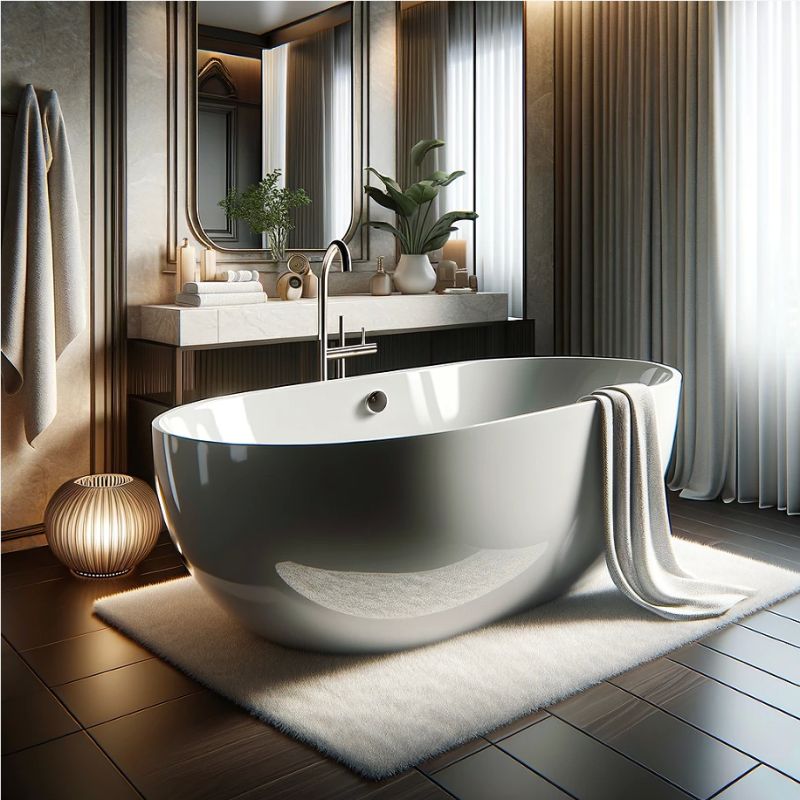In recent years, fiberglass bathtubs have become increasingly popular among those who pursue fashion. Fiberglass bathtubs perfectly embody a sense of style and luxury, which is why their popularity continues to grow. So, what are the advantages and disadvantages of fiberglass bathtubs? Today, let’s introduce them.

Asia composite materials (Thailand)co.,Ltd
The pioneers of fiberglass industry in THAILAND
E-mail:yoli@wbo-acm.com WhatsApp :+66966518165
Advantages of Fiberglass Bathtubs
1. Mature Raw Materials and Production Process
The raw and auxiliary materials of fiberglass bathtubs include glass fiber, matrix resin, and additives (curing agents, accelerators, fillers, pigments, etc.). The molding process of fiberglass has evolved from the initial hand lay-up process to vacuum suction, injection, and other methods. The bathtubs commonly referred to as “acrylic” in the market are made by heating acrylic sheets, then forming them into shells through vacuum suction, and finally backing them with fiberglass. Some manufacturers also use a method of spraying first, then casting to form.
2. Superior Overall Performance
Fiberglass bathtubs can achieve the best overall performance. Due to the low thermal conductivity, they have good insulation properties. When human skin first comes into contact with the surface, it does not feel cold. They have good plasticity, and compared to traditional steel materials, they can achieve consistency in material and structure in design and manufacturing.
Disadvantages of Fiberglass Bathtubs
1. The surface hardness of fiberglass bathtubs is low, making them prone to scratches and poor in wear resistance. After being used for a while, the surface enriched with glass fibers (especially the bottom layer) may develop fine cracks due to wear, becoming rough and uncomfortable for people lying inside.
2. The dirt from bathing is easily adsorbed on the surface of the fiberglass bathtub and is not easy to rinse off with water. This affects its maintenance and hygiene significantly.
3. Fiberglass bathtubs are difficult to repair once damaged.
The raw materials for fiberglass bathtubs mainly include:
1. **Glass Fiber**: Used as a reinforcing material to improve the strength and durability of the product. Glass fiber comes in various forms, such as filaments, fabrics, and non-woven materials, which can be selected according to the specific requirements of the product.
2. **Matrix Resin**: Usually unsaturated polyester resin, serving as the binder for the glass fibers. Once cured, it forms a hard plastic. The type and properties of the resin directly affect the performance of the finished product, such as hardness, chemical resistance, and heat resistance.
3. **Additives**:
- **Curing Agent**: Initiates the curing reaction of the resin, transforming it from a liquid to a solid state.
- **Accelerator**: Speeds up the curing process of the resin, shortening the production cycle.
- **Fillers**: These can be quartz powder, calcium carbonate, etc., used to improve the mechanical properties of the product, reduce the amount of resin used thus lowering costs, and also to improve certain physical properties of the product.
- **Pigments**: Used to color the product, enhancing its aesthetic appearance.
These raw materials are combined through specific production processes (such as hand lay-up, vacuum suction, injection, etc.) to make fiberglass bathtubs with certain shapes, sizes, and performance requirements. The selection and proportioning of each raw material, as well as the control of the production process, have a significant impact on the quality and performance of the final product.
Post time: Feb-29-2024




